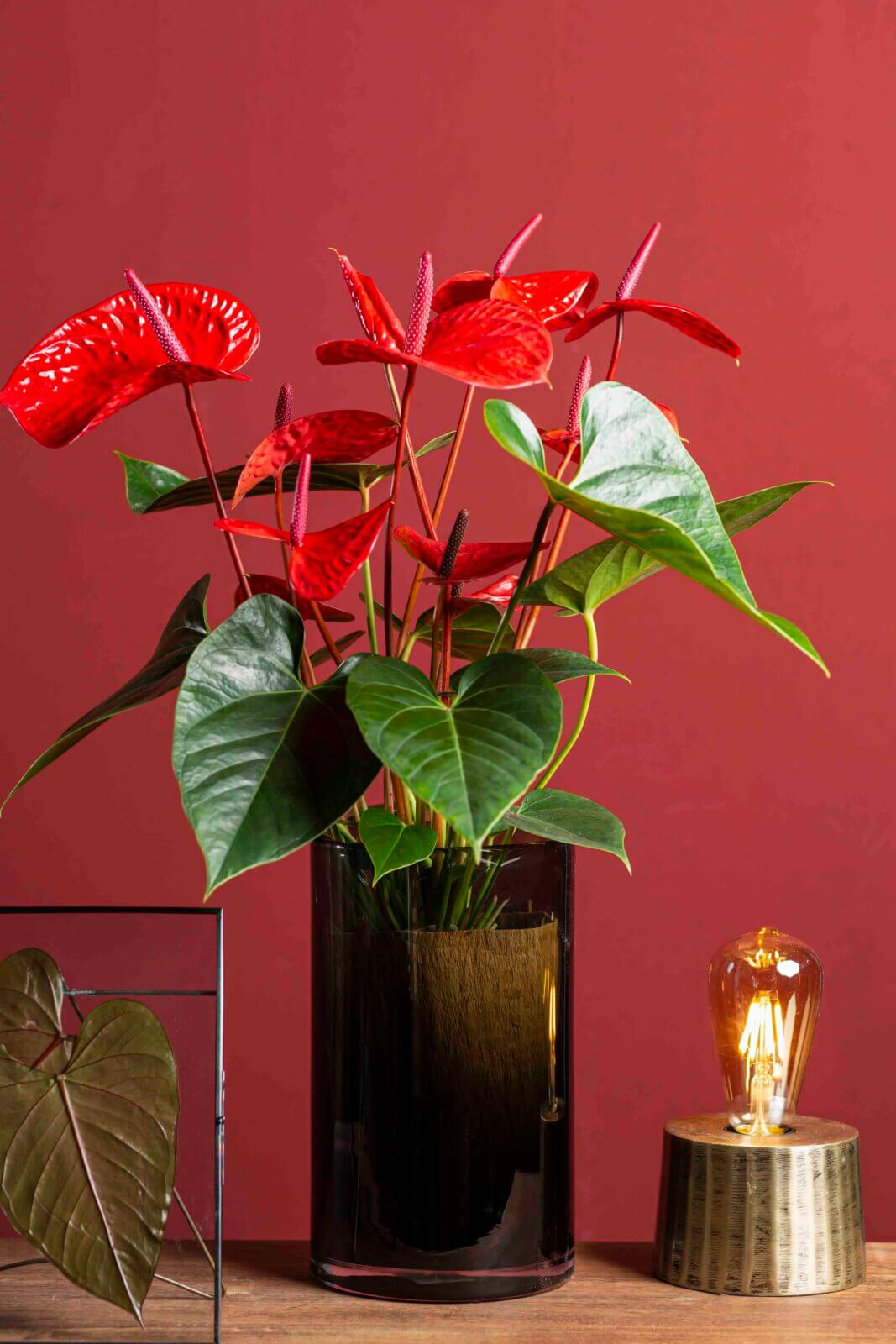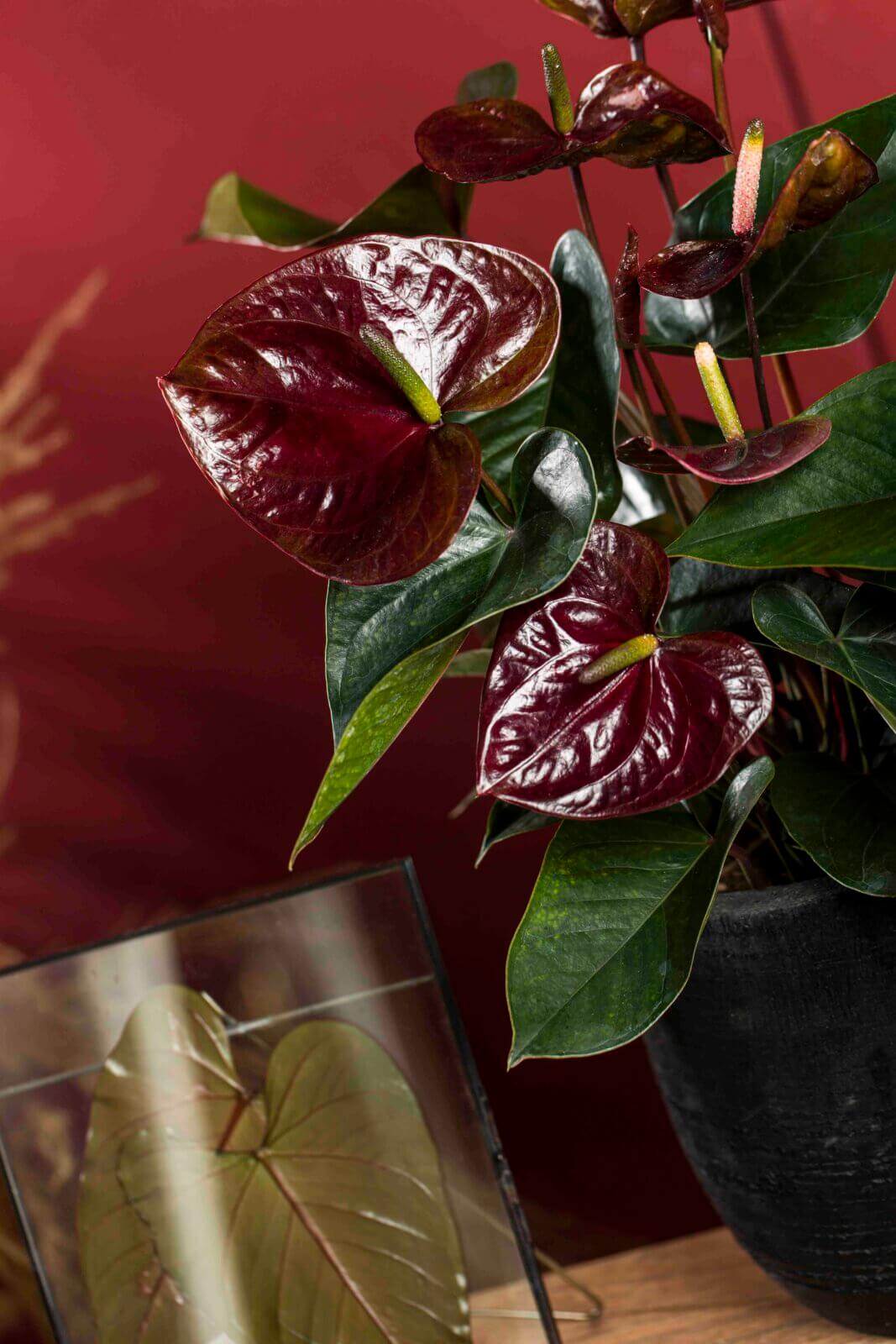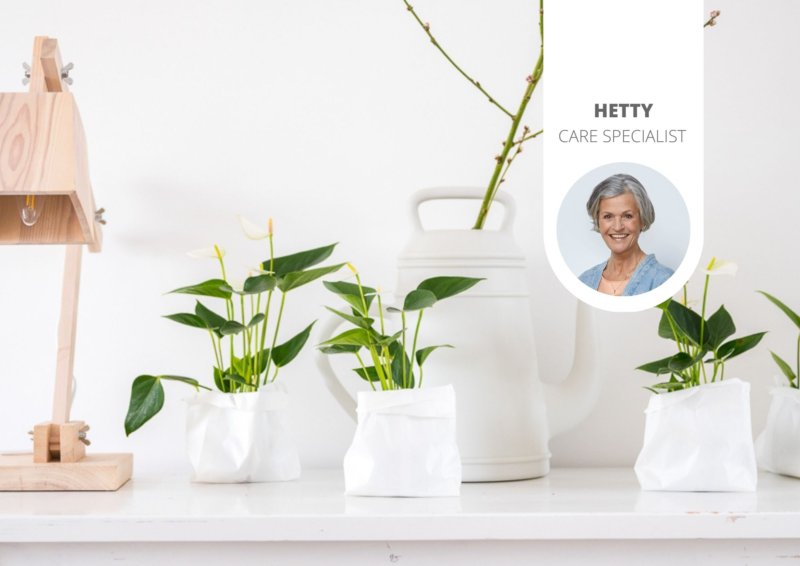Winter Challenges for Anthuriums: How to Prevent and Solve Them
Winter can be a tough season for houseplants, and Anthuriums are no exception. Cold temperatures, dry indoor air, and reduced daylight can all affect these tropical beauties. Luckily, with some extra care, you can keep your Anthurium healthy and thriving, even in the coldest months of the year. In this article, we’ll explore common winter challenges for Anthuriums and share tips to help you prevent and address them.
Winter Challenges for Anthuriums
Yellow Leaves
Yellowing leaves are one of the most common signs that your Anthurium may be struggling. In winter, this is often caused by a combination of insufficient light or overly moist potting soil.
How to Fix It:
- Light: Place your Anthurium in a bright location, ideally near a south- or west-facing window. Be sure to keep it away from cold drafts or the direct heat of a radiator.
- Watering: Regularly check the potting soil. Only water your plant when the top 2–3 cm feels dry to the touch. Use lukewarm water to prevent shocking the roots.
Also read: Anthuriums and Light: Understanding North, East, South and West
Dry, Brown Leaf Tips
Brown leaf tips are often a sign of low humidity. In winter, when the heating is on, the air inside can become very dry.
How to Fix It:
- Increase Humidity: Use a humidifier or place a bowl of water near your plant. You can also place a bowl with water and pebbles underneath the pot.
- Mist the Leaves: Regularly spray the leaves with a plant sprayer filled with soft, lime-free water.

Stunted Growth
Although Anthuriums typically grow less actively in winter, complete stagnation could indicate insufficient light or nutrients.
How to Fix It:
- Light: Ensure your Anthurium is getting enough light. Consider using a grow light if it’s placed in a darker room.
- Nutrition: Feed less frequently in winter, but if the plant still seems to need support, use a balanced fertilizer for flowering houseplants.
Sagging or Drooping Leaves
Sagging leaves often signal a water imbalance, such as overwatering or dehydration.
How to Fix It:
- Water Management: Always check that the potting soil isn’t too wet or too dry. Ensure the pot has proper drainage so excess water can escape.
- Temperature: Keep the temperature around your Anthurium consistent. Avoid cold drafts and don’t place the plant too close to a heat source.
No Flowers
If your Anthurium isn’t flowering in winter, this is normal. However, if it hasn’t bloomed for a long time, it may indicate a lack of light or nutrients.
How to Fix It:
- Stimulate Growth: In spring, move the plant to a brighter spot and provide a bit of extra nutrition to encourage blooming.
- Rest Period: Keep in mind that Anthuriums go through a resting period in winter. During this time, reduce watering and fertilization.

Additional Winter Tips for Anthuriums
- Protect Against Draughts: Ensure your Anthurium is not placed near doors or windows that open and close frequently.
- Use an Insulating Trivet: This helps prevent the roots from getting too cold from chilly windowsills or floors.
- Prune Carefully: Remove dead leaves or flowers, but avoid excessive pruning, as this can weaken the plant.
With proper care, you can easily prevent common winter problems with Anthuriums. By paying attention to light, watering, and humidity, you’ll keep your plant healthy and beautiful, even during the coldest months of the year.



